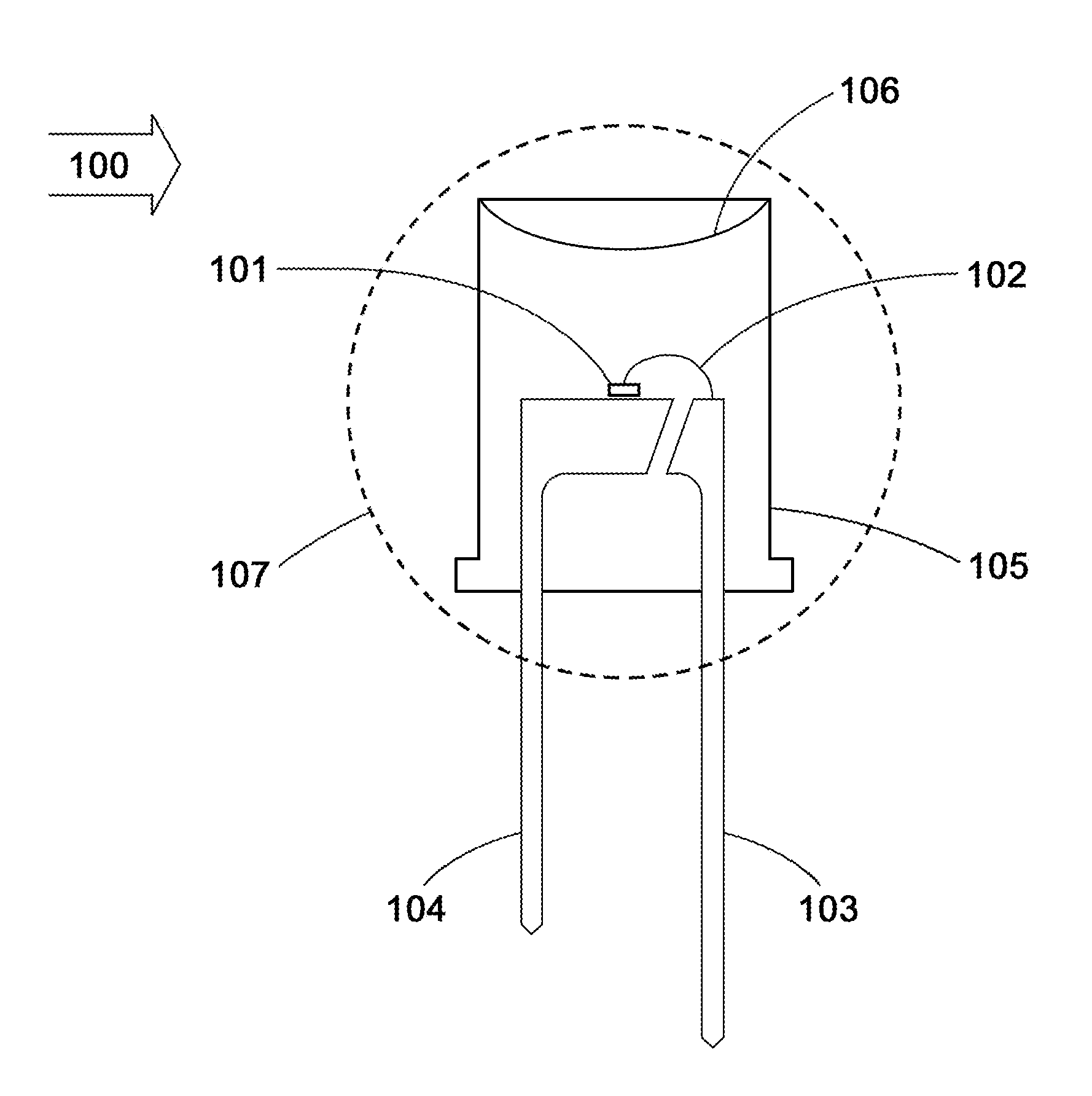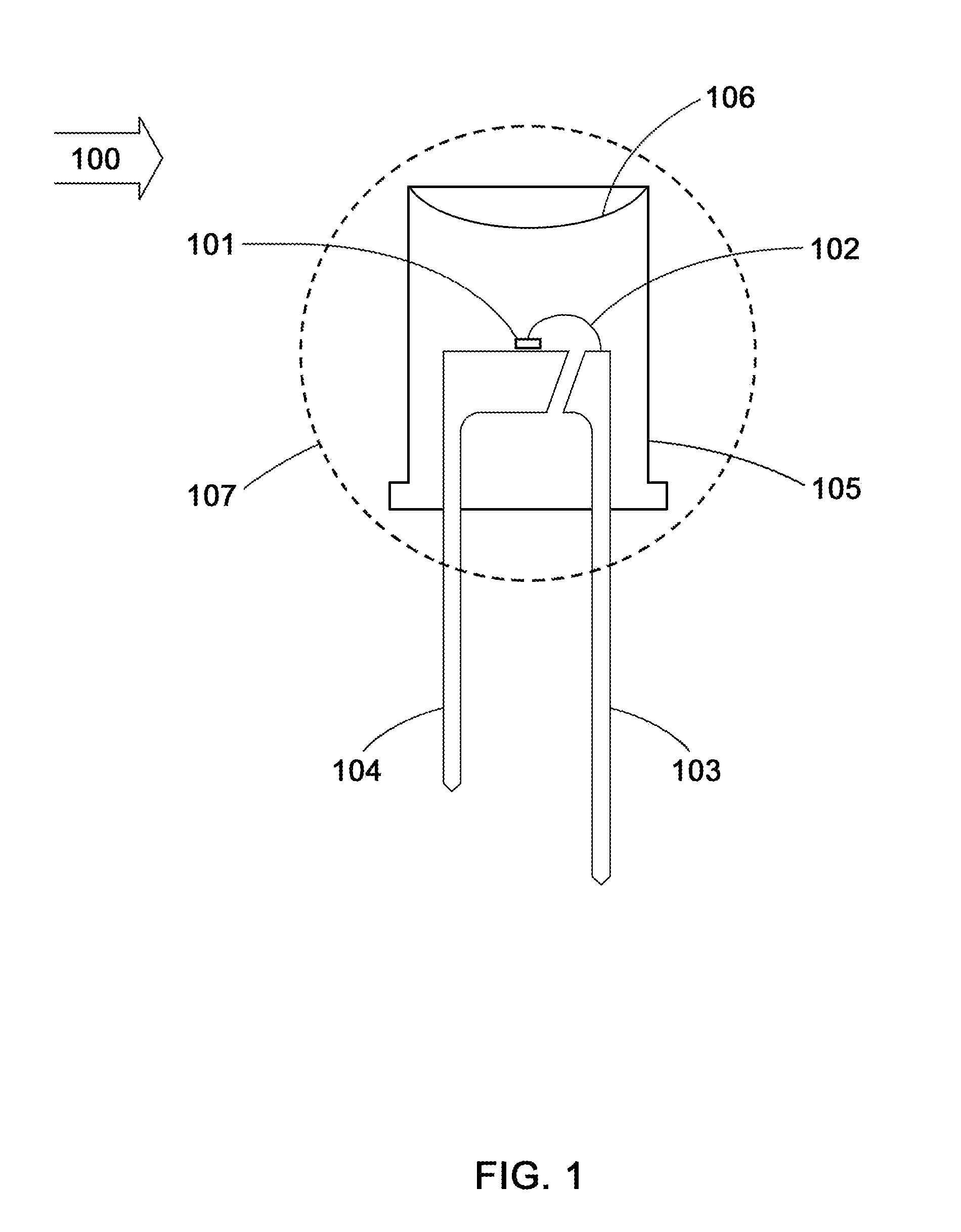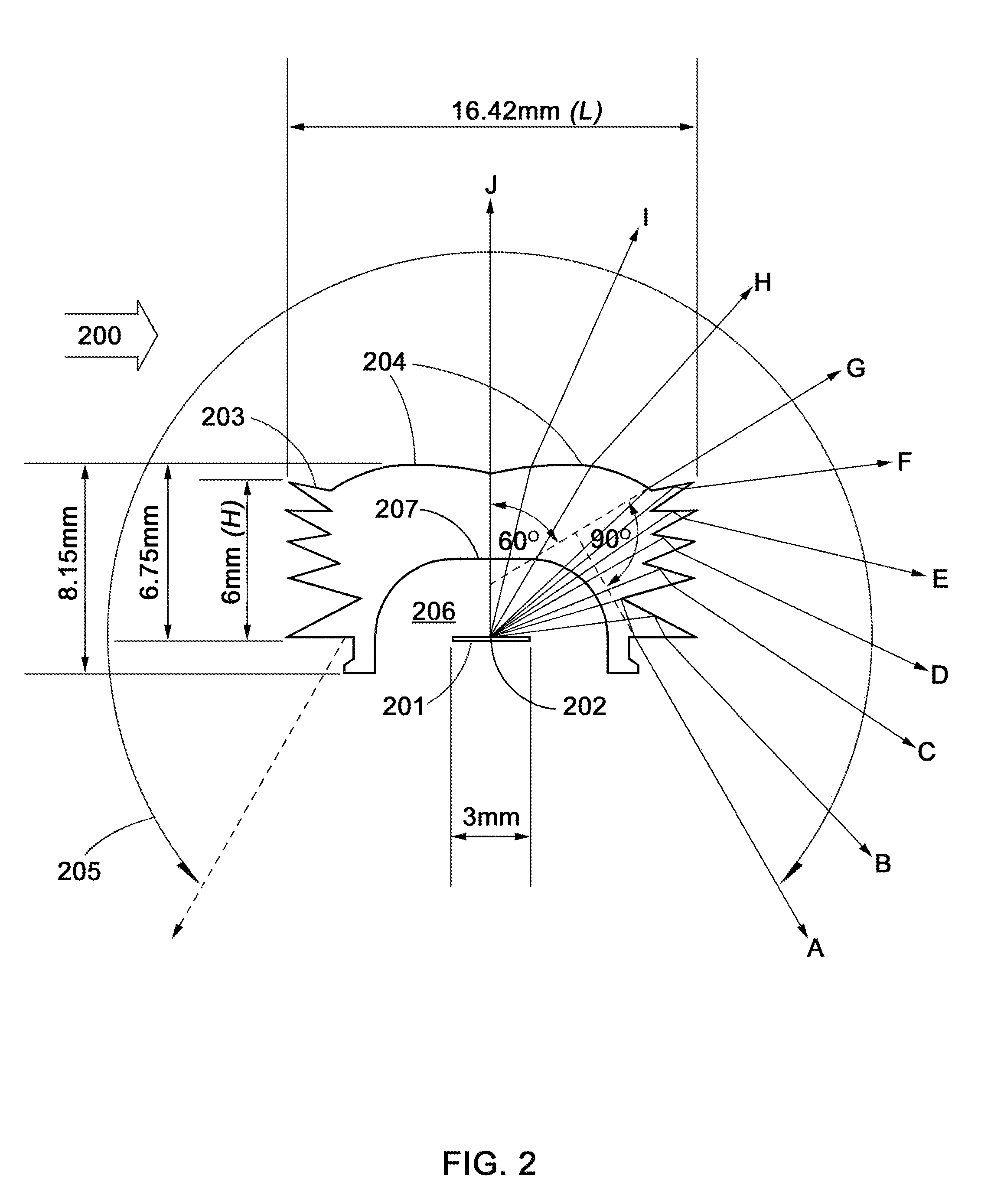Spherical light output LED lens and heat sink stem system
a technology of led lenses and stems, applied in semiconductor devices, lighting and heating apparatus, instruments, etc., can solve problems such as color shift, reduced light output, and shortened li
- Summary
- Abstract
- Description
- Claims
- Application Information
AI Technical Summary
Benefits of technology
Problems solved by technology
Method used
Image
Examples
Embodiment Construction
[0038]FIG. 2 illustrates an example of a spherical light producing lens in accordance with one embodiment of the invention. Light rays A through G emanating from an LED die 201, with a focal point 202, are totally internally reflected then refracted out of the lens 200 by the pointed elements 203 through a 90 degree angle. The top surface of the pointed elements 203 may be coated with a reflective material such as aluminum (AL) or nickel chrome (NiCr). Light rays G through J are refracted out of the double crown lens portion 204 through a 60 degree angle. Collectively, all the light rays emitted by the LED die 201 radiate around a 300 degree lighting angle 205 in the vertical plane and a 360 degree lighting angle in the horizontal plane. Surface 207 may be shaped to direct more light rays emitted from the LED die 201 towards a particular section of the lens, such as the pointed elements 203.
[0039]The length of the die 201 is directly proportional to the size of the lens 200. The len...
PUM
 Login to View More
Login to View More Abstract
Description
Claims
Application Information
 Login to View More
Login to View More - R&D
- Intellectual Property
- Life Sciences
- Materials
- Tech Scout
- Unparalleled Data Quality
- Higher Quality Content
- 60% Fewer Hallucinations
Browse by: Latest US Patents, China's latest patents, Technical Efficacy Thesaurus, Application Domain, Technology Topic, Popular Technical Reports.
© 2025 PatSnap. All rights reserved.Legal|Privacy policy|Modern Slavery Act Transparency Statement|Sitemap|About US| Contact US: help@patsnap.com



